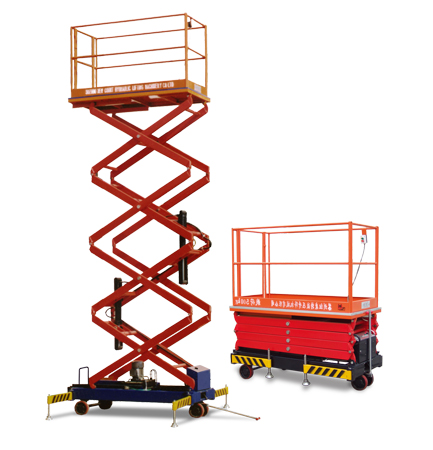Aerial work platforms, commonly known as AWPs or bucket trucks, are essential equipment used for various construction, maintenance and inspection activities. These hydraulically operated elevating work platforms allow workers to safely access elevated work areas without the need for ladders or scaffolding. With capabilities to lift personnel and equipment to heights ranging from few meters to over 100 meters, AWPs have revolutionized how overhead tasks are completed in many industries. In this article, we will understand the types of aerial work platforms available, their usage across different sectors and new technologies enhancing their functionalities.
Hydraulic Boom Lifts
Hydraulic boom lifts, popularly called cherry pickers, are one of the most commonly used aerial work platforms. They consist of a articulating or telescoping boom system mounted on an industrial truck chassis that can position a bucket or work cage parallel to the ground. Boom lifts are available in various boom extensions ranging from 10 meters to over 50 meters. As they can access areas with limited overhead clearance, they are extensively used for maintenance tasks like painting, lighting installations, inspections etc. Industries where boom lifts are frequently utilized include construction, infrastructure, facility management and utilities.
Scissor Lifts
When vertical access is required, scissor lifts are a preferable choice over boom lifts. These AWPs use a scissor-like mechanism instead of a telescoping boom to provide a vertically elevated platform. With platform heights available from 2 meters to over 30 meters, scissor lifts can position workers right next to the work area. Their compact size allows usage in confined spaces. Common applications involve masonry work, electrical installations, glazing, and plant & machinery maintenance. Scissor lifts see widespread deployment in industries like manufacturing, commercial real estate and event management.
Vertical Lifts
Used only for vertical access, vertical lifts or personnel lifts offer maximum reach with minimum footprint. Resembling an elevator, they consist of a platform accommodating 1-3 persons mounted on a lifting arm or mast. These AWPs offer heights up to 50 meters and come with features like automatic leveling, gates & guardrails for safety. Due to tiny base dimension, vertical lifts can be set up virtually anywhere for tasks like maintenance of wind turbines, cell towers, building facades, bridges etc. They prove indispensable for telecom, power generation and infrastructure maintenance.
Innovations in AWPs
Manufacturers are continuously incorporating new technologies to augment AWP efficiency, functionality and safety. Hybrid boom lifts combining hydraulic and electric drive systems are gaining traction owing to fuel efficiency and reduced emissions. Electrically powered models are being developed to enter indoor work sites. Aerial platforms now arrive with features like assisted steering, auto-levelling, anti-sway functions and stability controls for more stable operation. Advanced sensors are enabling collision avoidance, fall protection, auto stowing & outrigger monitoring. Additionally, remote operation capabilities via joysticks allow AWP control from safety of the platform. These innovations are expanding AWP applications into new domains.
Usage in Critical Industries
Aerial Work Platforms have emerged as indispensable solutions for operations and maintenance tasks across many core industries due to their elevated working heights.
Power utilities rely on AWPs for efficient installation and repair of transmission lines and power distribution systems. Teams deployed in bucket trucks ensure round-the-clock electricity supply by addressing network faults from a safe platform.
In telecommunications, they are utilized for installing, replacing and repairing cell towers, antennae, wireless cables and broadband equipment. Stringing of new fiber optic cables connecting networks also involves extensive usage of AWPs.
Government bodies utilize these equipment for highway lighting maintenance, infrastructure inspection, construction supervision and traffic management during road works from an aerial view. Boom lifts and scissor lifts deployed by municipal corporations enable effective maintenance of street lights and signage.
Oil & gas industry employs AWPs for inspection and repair activities at refineries, LNG terminals, petrochemical plants and offshore rigs. They aid in monitoring pipeline networks, inspecting storage tanks and carrying out planned turnarounds safely.




